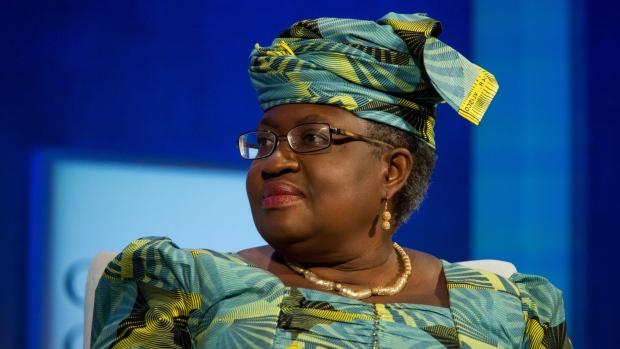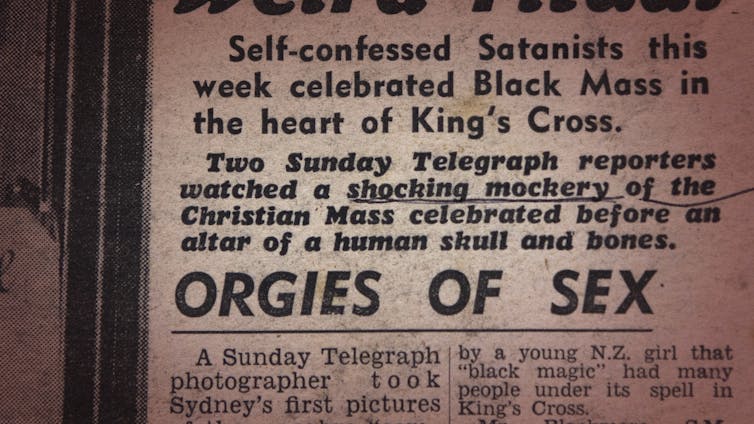Morocco – US: Protectionism rising, as US company accuses OCP of unfair competition
By Estelle Maussion
Posted on Thursday, 11 February 2021 17:06

Mines of Boucraa, in the Sahara. © HOC / OCP
The Biden administration has confirmed that it wants to tax Moroccan fertiliser imports, but the pan-African giant OCP is still hoping to avoid the worst. Its rival, Mosaic, accuse the Moroccan company of selling subsidised fertiliser.
It is not yet the end, however the affair is nearing its end. The US Department of Commerce (USDC) issued its final ruling on 9 February in a crucial case for Moroccan phosphate giant OCP.
The Biden administration has confirmed that it wants to tax Moroccan fertiliser imports, but the pan-African giant OCP is still hoping to avoid the worst. Its rival, Mosaic, accuse the Moroccan company of selling subsidised fertiliser.
It is not yet the end, however the affair is nearing its end. The US Department of Commerce (USDC) issued its final ruling on 9 February in a crucial case for Moroccan phosphate giant OCP.
A double lawsuit
The USDC decided to impose a tax on Moroccan fertiliser imports into the US, ruling in favour of OCP’s US competitor, the Mosaic group. Mosaic, which accuses OCP of selling “subsidised” products, filed a double lawsuit before the USDC and the US International Trade Commission for unfair competition in June 2020.
READ MORE Morocco – US: Fertiliser giant OCP faces challenges in North America
The required tax rate against OCP is 19.97%, slightly lower than the 23.46% announced at the end of the preliminary investigation.
This is less than that sought against EuroChem (47.05%) but more than PhosAgro (9.19%), two Russian groups also targeted by Mosaic, which claimed a fee of over 70%.
Remaining a “reliable” partner to US farmers
Taking note of the decision but continuing to reject the charges against him, the group led by Mostafa Terrab recalled that taxation will only go into effect if the US International Trade Commission confirms the existence of injury to US industry. The panel, which ruled in favour of taxation after the preliminary investigation, is due to issue its final decision on 25 March.
“OCP continues to cooperate with US agencies and is determined to remain a reliable partner to US farmers,” said the Moroccan giant. Unsurprisingly, its competitor Mosaic welcomed the US Department of Agriculture’s decision, stressing that if the tax is introduced that it would apply for at least five years.
That is enough time to reshuffle the cards on the strategic US fertilizer market. In 2019, according to the rating agency Fitch, Morocco was the leading exporter of MAP and DAP [main phosphate fertilizers] to the US, accounting for 60% of imports, followed by Russia with 25%.
MOSAIC IS A BIG PLAYER IN CANADIAN PHOSPHATE PRODUCTION IN SASKATCHEWAN. THE RUSSIAN IMPORTS ARE FROM BELARUS THAT HAS UNDERCUT THE INTERNATIONAL MARKET COST OF PHOSPHATE.
PHOSPHATE FIGHT
Morocco – US: Fertiliser giant OCP faces challenges in North America
By Estelle Maussion
Posted on Monday, 11 January 2021

Taken by surprise
The dispute – a first in OCP’s 100 years of operation and a rarity in the phosphate market – demonstrates the stiff competition in the sector. Influenced by US political considerations, the final outcome of this economic wrangling is expected in March 2021.
On the face of it, the case has gotten off to a bad start for OCP – which reported revenue of €4.9bn ($6bn) in 2019 – as the investigation took the company and much of the industry by surprise.
After opening at the end of June 2020 and being publicly disclosed by Mosaic – which reported revenue of $8.9bn in 2019 – and widely picked up by the media, the probe put the Moroccan group, along with Russia’s PhosAgro and EuroChem, also targeted, on the defensive.
After this rude awakening, and despite OCP’s reassuring statements as to its ability to make a convincing case against the imposition of duties, the preliminary investigation had an unfavourable outcome for OCP.
At the end of last November, confirming the US International Trade Commission’s initial analysis, the US Department of Commerce issued a decision in favour of a preliminary 23.5% duty on Moroccan fertiliser imports, much lower than the rate applicable to EuroChem (72.50%) but higher than the one applicable to PhosAgro (20.94%).
And, while it is hard to say what the final outcome of the investigation will be – with a decision expected by 25 March – there is a real possibility that the imposition of countervailing duties will be confirmed. Before the competition case was launched, the duty applied to OCP was less than 1%.
OCP upbeat but worried
While upbeat about its prospects – in OCP’s words: “We are persuaded that a thorough investigation will reveal that the petition is baseless” – the group is taking the matter seriously.
The moment the probe got under way, the company suspended its US exports. OCP also mobilised its teams to counter Mosaic’s hefty complaint, in which it accuses the Moroccan group of benefiting from preferential access to mining properties, government loans and guarantees, and tax exemptions and rebates.
READ MORE Togo and Aliko Dangote join forces for a $2bn fertilizer project
OCP is being represented by its longstanding legal representative, the law firm Covington & Burling. Its senior counsel, Stuart E. Eizenstat, a former senior official in several US administrations, was OCP’s official lobbyist from 2008 to 2015.
His colleague, Shara L. Aranoff, assisted Mohamed Belhoussain, OCP’s executive vice-president for sales, during the preliminary investigation in July 2020.
Three PR firms retained
Further attesting to the matter’s significance, in October the group headed by Terrab, who holds a degree from the Massachusetts Institute of Technology (MIT) and previously worked as an analyst at engineering company Bechtel, retained three PR firms (Cornerstone Government Affairs, FleishmanHillard and CCO) to defend its position.
OCP argues “[it= does not benefit from any government subsidy” and “phosphate fertiliser imports from Morocco do not harm the local US industry”.
In early December, FleishmanHillard’s agriculture specialist Tony Zagora launched a PR campaign to promote awareness about the OCP situation among the American public.
Called “Stand with US Farmers” and led by OCP North America chief executive officer Kerry McNamara, who has served as Terrab’s adviser since 2010, the campaign sounds the alarm on the consequences of limiting the supply of fertilisers and the potential increased costs that Mosaic’s complaint could trigger. The campaign’s website calls on people to sign a petition directed at the US congress.
OCP halted in its tracks
OCP is hard at work on the issue because Mosaic’s complaint has halted its activity into the US market, a crucial source of revenue. In 2016, OCRP created both OCP Africa and a US subsidiary.
Initially focused on market analysis and partnerships, OCP North America has expanded to include sales and marketing divisions. These internal changes went hand in hand with fast business growth: North America’s share of the company’s revenue increased from 12% in 2016 to 16% in 2018.
The following year, the region accounted for 21% of the group’s exports, just behind South America (30%). The data regarding Morocco’s raw phosphate exports to the United States are even more telling: 1.3m tonnes (mt) in 2017, 1.8mt in 2018 and more than 2mt in 2019, representing around $1.9bn over a three-year period.
“Morocco is the biggest exporter of monoammonium phosphate/diammonium phosphate into the US, accounting for around 60% of the US imports, followed by Russia with around a 25% share in 2019,” Fitch Ratings wrote in July.
Mosaic, the big winner?
Is Mosaic the big winner and OCP the loser? Things are not so clear-cut in the run-up to the investigation’s final outcome. In the US, the withdrawal of Moroccan and Russian players has definitely proved a boon for domestic producers, including the leading firm, Mosaic, which has effectively taken back control of the US phosphate sector.
The US company – which did not respond to requests for comment – has rid itself of its most serious competitors, now replaced by others – Australia, Mexico and Saudi Arabia – that have production costs more in line with its own.
READ MORE Nigeria’s Dangote still expects refinery to be running early 2021
Mosaic’s manoeuvring has also pushed up phosphate prices in a global environment marked by low prices since 2019. In the third quarter of 2020, i.e., after the preliminary investigation launched, US-produced phosphate fertiliser was selling for $20 and $40 more per tonne, respectively, than fertiliser in India and Brazil. One year earlier, US phosphate fertiliser was selling for $20 less than these two countries’ prices.
Despite this good news, Mosaic’s financial position is still precarious, as its cashflow from has almost been halved in four years. Its 2019 revenue showed no change from 2015 levels.
Global competition
OCP has responded to the setback through diversification. “The Moroccan group swiftly responded to and offset the suspension of its exports to the United States by increasing its exports to other countries, including Brazil and India,” said Mounir Halim, managing director of Afriqom, a consulting firm specialising in the African fertiliser market.
As a matter of fact, Brazil is a key market for Mosaic, which acquired Vale Fertilizantes in 2018 and invested in production and port infrastructure there. Though Mosaic has forced OCP out of its North American sphere of influence, it will nevertheless compete with it elsewhere.
READ MORE Morocco and Western Sahara: a decades-long war of attrition
“Being shut out of a market is never a good thing, but OCP, as one of the world’s most competitive fertiliser producers, has plenty of alternatives,” said Glen Kurokawa, senior analyst at CRU.
Fitch Ratings emphasised OCP’s numerous advantages, such as its international footprint, position as the world’s leading phosphate fertiliser producer and low production costs, arguing that if the US ultimately imposes countervailing duties, the measure would have a limited impact on the group’s performance and no effect on its rating.
Once the final outcome of the investigation is known, OCP’s return to the US market will be determined by a calculation: can the group maintain adequate margins despite the cost of potential import duties?
Unknown political variables
In addition to these economic considerations, there are unknown political variables. For one, the arrival US President-Elect Joe Biden in office and the recent diplomatic rapprochement between Morocco and the US are likely to have an impact on the ongoing investigation.
While experts say that such investigations are purely administrative and that there is generally little difference between preliminary and final decisions, the reality is that Mosaic – whose lobbying activities are performed by Ballard Partners, a firm headed by Brian Ballard, a major donor of President Donald Trump – has overwhelmingly played the protectionist card. The US company has repeated over and over that 3,500 jobs are at stake in the country.
Will these arguments have as much impact when Biden takes office? On 10 December, he nominated attorney Katherine Tai as US trade representative. While some have been quick to praise her “diplomatic skills” and “pragmatism”, her backers also underlined that she is determined to “ge[t] wins for American workers”. OCP is now factoring these new variables into its complex US equation.
Morocco – US: Fertiliser giant OCP faces challenges in North America
By Estelle Maussion
Posted on Monday, 11 January 2021

An OCP phosphate mine at Boucraa. REUTERS/Youssef Boudlal
The Moroccan fertiliser group, headed by Mostafa Terrab, is facing allegations of unfair competition by US-based producer Mosaic in an unprecedented dispute over the strategic North American market.
The United States, a country where the CEO of phosphate fertiliser giant OCP, Mostafa Terrab, once lived and studied, has been making the executive’s life difficult.
Since July 2020, the Moroccan group’s exports to the vital North American market have been at a standstill. OCP is one of the world’s top five producers alongside US-based Mosaic, Russia’s PhosAgro and two Chinese players, GPCG and YTH.
READ MORE OCP fertiliser deals take Nigeria closer to self-sufficiency
OCP made the move after its US competitor Mosaic filed a petition with the US Department of Commerce and the US International Trade Commission requesting an investigation into unfair competitive practices. Mosaic, alleging that OCP receives subsidies, is demanding countervailing duties be imposed on Moroccan phosphate fertilisers.
The Moroccan fertiliser group, headed by Mostafa Terrab, is facing allegations of unfair competition by US-based producer Mosaic in an unprecedented dispute over the strategic North American market.
The United States, a country where the CEO of phosphate fertiliser giant OCP, Mostafa Terrab, once lived and studied, has been making the executive’s life difficult.
Since July 2020, the Moroccan group’s exports to the vital North American market have been at a standstill. OCP is one of the world’s top five producers alongside US-based Mosaic, Russia’s PhosAgro and two Chinese players, GPCG and YTH.
READ MORE OCP fertiliser deals take Nigeria closer to self-sufficiency
OCP made the move after its US competitor Mosaic filed a petition with the US Department of Commerce and the US International Trade Commission requesting an investigation into unfair competitive practices. Mosaic, alleging that OCP receives subsidies, is demanding countervailing duties be imposed on Moroccan phosphate fertilisers.
Taken by surprise
The dispute – a first in OCP’s 100 years of operation and a rarity in the phosphate market – demonstrates the stiff competition in the sector. Influenced by US political considerations, the final outcome of this economic wrangling is expected in March 2021.
On the face of it, the case has gotten off to a bad start for OCP – which reported revenue of €4.9bn ($6bn) in 2019 – as the investigation took the company and much of the industry by surprise.
After opening at the end of June 2020 and being publicly disclosed by Mosaic – which reported revenue of $8.9bn in 2019 – and widely picked up by the media, the probe put the Moroccan group, along with Russia’s PhosAgro and EuroChem, also targeted, on the defensive.
After this rude awakening, and despite OCP’s reassuring statements as to its ability to make a convincing case against the imposition of duties, the preliminary investigation had an unfavourable outcome for OCP.
At the end of last November, confirming the US International Trade Commission’s initial analysis, the US Department of Commerce issued a decision in favour of a preliminary 23.5% duty on Moroccan fertiliser imports, much lower than the rate applicable to EuroChem (72.50%) but higher than the one applicable to PhosAgro (20.94%).
And, while it is hard to say what the final outcome of the investigation will be – with a decision expected by 25 March – there is a real possibility that the imposition of countervailing duties will be confirmed. Before the competition case was launched, the duty applied to OCP was less than 1%.
OCP upbeat but worried
While upbeat about its prospects – in OCP’s words: “We are persuaded that a thorough investigation will reveal that the petition is baseless” – the group is taking the matter seriously.
The moment the probe got under way, the company suspended its US exports. OCP also mobilised its teams to counter Mosaic’s hefty complaint, in which it accuses the Moroccan group of benefiting from preferential access to mining properties, government loans and guarantees, and tax exemptions and rebates.
READ MORE Togo and Aliko Dangote join forces for a $2bn fertilizer project
OCP is being represented by its longstanding legal representative, the law firm Covington & Burling. Its senior counsel, Stuart E. Eizenstat, a former senior official in several US administrations, was OCP’s official lobbyist from 2008 to 2015.
His colleague, Shara L. Aranoff, assisted Mohamed Belhoussain, OCP’s executive vice-president for sales, during the preliminary investigation in July 2020.
Three PR firms retained
Further attesting to the matter’s significance, in October the group headed by Terrab, who holds a degree from the Massachusetts Institute of Technology (MIT) and previously worked as an analyst at engineering company Bechtel, retained three PR firms (Cornerstone Government Affairs, FleishmanHillard and CCO) to defend its position.
OCP argues “[it= does not benefit from any government subsidy” and “phosphate fertiliser imports from Morocco do not harm the local US industry”.
In early December, FleishmanHillard’s agriculture specialist Tony Zagora launched a PR campaign to promote awareness about the OCP situation among the American public.
Called “Stand with US Farmers” and led by OCP North America chief executive officer Kerry McNamara, who has served as Terrab’s adviser since 2010, the campaign sounds the alarm on the consequences of limiting the supply of fertilisers and the potential increased costs that Mosaic’s complaint could trigger. The campaign’s website calls on people to sign a petition directed at the US congress.
OCP halted in its tracks
OCP is hard at work on the issue because Mosaic’s complaint has halted its activity into the US market, a crucial source of revenue. In 2016, OCRP created both OCP Africa and a US subsidiary.
Initially focused on market analysis and partnerships, OCP North America has expanded to include sales and marketing divisions. These internal changes went hand in hand with fast business growth: North America’s share of the company’s revenue increased from 12% in 2016 to 16% in 2018.
The following year, the region accounted for 21% of the group’s exports, just behind South America (30%). The data regarding Morocco’s raw phosphate exports to the United States are even more telling: 1.3m tonnes (mt) in 2017, 1.8mt in 2018 and more than 2mt in 2019, representing around $1.9bn over a three-year period.
“Morocco is the biggest exporter of monoammonium phosphate/diammonium phosphate into the US, accounting for around 60% of the US imports, followed by Russia with around a 25% share in 2019,” Fitch Ratings wrote in July.
Mosaic, the big winner?
Is Mosaic the big winner and OCP the loser? Things are not so clear-cut in the run-up to the investigation’s final outcome. In the US, the withdrawal of Moroccan and Russian players has definitely proved a boon for domestic producers, including the leading firm, Mosaic, which has effectively taken back control of the US phosphate sector.
The US company – which did not respond to requests for comment – has rid itself of its most serious competitors, now replaced by others – Australia, Mexico and Saudi Arabia – that have production costs more in line with its own.
READ MORE Nigeria’s Dangote still expects refinery to be running early 2021
Mosaic’s manoeuvring has also pushed up phosphate prices in a global environment marked by low prices since 2019. In the third quarter of 2020, i.e., after the preliminary investigation launched, US-produced phosphate fertiliser was selling for $20 and $40 more per tonne, respectively, than fertiliser in India and Brazil. One year earlier, US phosphate fertiliser was selling for $20 less than these two countries’ prices.
Despite this good news, Mosaic’s financial position is still precarious, as its cashflow from has almost been halved in four years. Its 2019 revenue showed no change from 2015 levels.
Global competition
OCP has responded to the setback through diversification. “The Moroccan group swiftly responded to and offset the suspension of its exports to the United States by increasing its exports to other countries, including Brazil and India,” said Mounir Halim, managing director of Afriqom, a consulting firm specialising in the African fertiliser market.
As a matter of fact, Brazil is a key market for Mosaic, which acquired Vale Fertilizantes in 2018 and invested in production and port infrastructure there. Though Mosaic has forced OCP out of its North American sphere of influence, it will nevertheless compete with it elsewhere.
READ MORE Morocco and Western Sahara: a decades-long war of attrition
“Being shut out of a market is never a good thing, but OCP, as one of the world’s most competitive fertiliser producers, has plenty of alternatives,” said Glen Kurokawa, senior analyst at CRU.
Fitch Ratings emphasised OCP’s numerous advantages, such as its international footprint, position as the world’s leading phosphate fertiliser producer and low production costs, arguing that if the US ultimately imposes countervailing duties, the measure would have a limited impact on the group’s performance and no effect on its rating.
Once the final outcome of the investigation is known, OCP’s return to the US market will be determined by a calculation: can the group maintain adequate margins despite the cost of potential import duties?
Unknown political variables
In addition to these economic considerations, there are unknown political variables. For one, the arrival US President-Elect Joe Biden in office and the recent diplomatic rapprochement between Morocco and the US are likely to have an impact on the ongoing investigation.
While experts say that such investigations are purely administrative and that there is generally little difference between preliminary and final decisions, the reality is that Mosaic – whose lobbying activities are performed by Ballard Partners, a firm headed by Brian Ballard, a major donor of President Donald Trump – has overwhelmingly played the protectionist card. The US company has repeated over and over that 3,500 jobs are at stake in the country.
Will these arguments have as much impact when Biden takes office? On 10 December, he nominated attorney Katherine Tai as US trade representative. While some have been quick to praise her “diplomatic skills” and “pragmatism”, her backers also underlined that she is determined to “ge[t] wins for American workers”. OCP is now factoring these new variables into its complex US equation.
MORROCO INVADED THE WESTERN SAHARA FOR PHOSPHATE
TEND YOUR GARDEN
Morocco’s OCP – A big, green mining machine
By Julien Wagner, in Khouribga for Jeune Afrique
Posted on Friday, 18 January 2019
TEND YOUR GARDEN
Morocco’s OCP – A big, green mining machine
By Julien Wagner, in Khouribga for Jeune Afrique
Posted on Friday, 18 January 2019
updated on Thursday, 7 March 2019


OCP's phosphoric acid and phosphate fertilizer production in Jorf Lasfar.
(AP Abdeljalil Bounhar)
In a decade Morocco's OCP Group, the formerly state-owned phosphate-mining firm, has become the kingdom's behemoth. It is spending big on research, and expanding production and processing capacity, in order to grab more of the international market.
Just as the gold rush built Johannesburg, Morocco’s town of Khouribga was built to service the monumental phosphate deposit discovered in Boujniba in 1917 – some 31% of global reserves. Since then its destiny has been inextricably linked to that of the Office Chérifien des Phosphates – now the OCP Group.
Leaving Khouribga to the south, looking towards Boujniba, you can’t miss the huge mounds left by the extraction of millions of tonnes of phosphate rock. “There used to be many more,” says Brahim Ramdani, OCP’s director of mines in Khourigba. For several years now, the company has been flattening these mini-mountains and using them to plant millions of trees. It is just one of the thousands of projects in the $8bn investment programme OCP launched in 2008, which in 10 years has transformed the company and, with it, Khouribga. OCP is now Morocco’s largest group, with a 2017 turnover of €4.3bn.
The plan, financed by sky-high prices for phosphate, was to double phosphate mining activity and triple fertiliser production by 2020. It was a two-pronged strategy, suggests one Middle Eastern importer who requested anonymity: “Partly to become flexible enough to export more of one product – be it phosphate rock, phosphoric acid or fertiliser – to meet market demand at any particular moment. […] But also to dissuade other rival producers from trying to enter the race.”
Back in the early years of the century, OCP’s margins were small, and the company was caught up in the machinery of state, run by officials linked to the royal palace. Under Mostafa Terrab, it became a limited company in 2008 and restructured its management and operations: from logistics to sales. Over the next decade, OCP went from 28m tonnes of phosphates mined to 45m, and fertiliser output leapt from 3.6m tonnes to nearly 12m tonnes per annum. It now has a gross operating surplus of more than $1bn.
There have been other innovations. Where the rock was previously hauled by train 150km from the Khouribga mines to the port of Jorf Lasfar, it is now pumped through a metre-wide, steel and rubber slurry pipe. Sensors at each mine and along the pipeline allow a new data-management system to track volumes and identify problems as they develop. A plan to replicate the system for the mines of Ben Guerir is taking shape
Industry is greedy for energy
At the other end of the pipe, the port of Jorf Lasfar is transforming into the largest fertiliser production hub in the world, with a capacity to produce 11m tonnes of phosphate fertiliser per year and 6m tonnes of phosphoric acid. The whiff of sulphur wafts over the complex. Some 45 different blends of fertiliser are created there, ready to be shipped out from Jorf Lasfar, which last year overtook the port of Casablanca in tonnage exported.
All this requires energy. OCP alone consumes 6%-7% of Morocco’s annual energy supply and 1% of its water. “As soon as we boost production, we have to systematically think of ways to lower costs,” says Amine Kaf, the Jorf Lasfar facility director. “We need both flexibility and sustainable development. We have brought in the best industrial consultants, like Jacobs Engineering and DuPont, to help us square that circle.”
Given the immense technical challenges, OCP is investing in research and training engineers. It built Université Mohammed VI Polytechnique at Ben Guerir, with its well-equiped laboratories to do research in agronomy, nanotechnology and soil analysis. Its current few hundred students should number 5,000 at maturity. The school has forged partnerships with the US-based Massachusetts Institute of Technology (MIT), France’s Ecole de Mines de Paris and Canada’s Université Laval.
Open innovation
OCP chief economist, Mohamed Soual, adds: “The university allows us access to many research institutions around the world and allows us to participate in ‘open innovation’ […]. We can’t keep chasing academics around the world and offering them consulting contracts.” The group has even created a think tank, the OCP Policy Center, to tackle the political angles of global business.
Step inside OCP’s headquarters in Casablanca, and you might think yourself in Silicon Valley. Even more so on the first floor, dubbed the ‘Digital Factory’. A young woman wearing a hijab plays ping pong during lunch, and there are many whiteboards and Post-it notes. This US-inspired environment is not without business logic. Trade with the United States represents between 25% and 30% of the group’s turnover.
OCP’s ambitions are to take this as the first phase of a much larger journey. “We cannot be satisfied with being 17%-18% of global phosphate production when we have 72% of global phosphate reserves,” says Soual, taking aim at competitors like Russia’s PhosAgro and Saudi Arabia’s Ma’aden. “And we also need to diversify, hence our purchase of a Spanish biostimulant company and a new partnership with a Chinese group who are specialists in fertiliser additives.”
But all is not plain sailing for OCP, which has faced hard times in the past (see box). There remains, for example, the domestic political context of the group, operating in the sensitive Western Sahara region. The Polisario Front, which does not recognise Morocco’s sovereignty in the region, regularly tries to intercept OCP cargoes around the world. The OCP-backed Phosboucraa Foundation is trying to improve relations by investing in the city of Laayoune and elsewhere in the region.
And then there is the question of OCP’s debt. To execute its expansion plans covering the period until 2027, OCP will need to invest more than $9bn. In May, it raised Dh5bn ($526m) on the local market, following fundraising of $2.6bn on the international markets in 2014 and 2015. Today, total debt is estimated at Dh45bn – about three times OCP’s earnings before interest, tax, depreciation and amortisation. The company lost Dh1.6bn in the last financial year.
In a decade Morocco's OCP Group, the formerly state-owned phosphate-mining firm, has become the kingdom's behemoth. It is spending big on research, and expanding production and processing capacity, in order to grab more of the international market.
Just as the gold rush built Johannesburg, Morocco’s town of Khouribga was built to service the monumental phosphate deposit discovered in Boujniba in 1917 – some 31% of global reserves. Since then its destiny has been inextricably linked to that of the Office Chérifien des Phosphates – now the OCP Group.
Leaving Khouribga to the south, looking towards Boujniba, you can’t miss the huge mounds left by the extraction of millions of tonnes of phosphate rock. “There used to be many more,” says Brahim Ramdani, OCP’s director of mines in Khourigba. For several years now, the company has been flattening these mini-mountains and using them to plant millions of trees. It is just one of the thousands of projects in the $8bn investment programme OCP launched in 2008, which in 10 years has transformed the company and, with it, Khouribga. OCP is now Morocco’s largest group, with a 2017 turnover of €4.3bn.
The plan, financed by sky-high prices for phosphate, was to double phosphate mining activity and triple fertiliser production by 2020. It was a two-pronged strategy, suggests one Middle Eastern importer who requested anonymity: “Partly to become flexible enough to export more of one product – be it phosphate rock, phosphoric acid or fertiliser – to meet market demand at any particular moment. […] But also to dissuade other rival producers from trying to enter the race.”
Back in the early years of the century, OCP’s margins were small, and the company was caught up in the machinery of state, run by officials linked to the royal palace. Under Mostafa Terrab, it became a limited company in 2008 and restructured its management and operations: from logistics to sales. Over the next decade, OCP went from 28m tonnes of phosphates mined to 45m, and fertiliser output leapt from 3.6m tonnes to nearly 12m tonnes per annum. It now has a gross operating surplus of more than $1bn.
There have been other innovations. Where the rock was previously hauled by train 150km from the Khouribga mines to the port of Jorf Lasfar, it is now pumped through a metre-wide, steel and rubber slurry pipe. Sensors at each mine and along the pipeline allow a new data-management system to track volumes and identify problems as they develop. A plan to replicate the system for the mines of Ben Guerir is taking shape
Industry is greedy for energy
At the other end of the pipe, the port of Jorf Lasfar is transforming into the largest fertiliser production hub in the world, with a capacity to produce 11m tonnes of phosphate fertiliser per year and 6m tonnes of phosphoric acid. The whiff of sulphur wafts over the complex. Some 45 different blends of fertiliser are created there, ready to be shipped out from Jorf Lasfar, which last year overtook the port of Casablanca in tonnage exported.
All this requires energy. OCP alone consumes 6%-7% of Morocco’s annual energy supply and 1% of its water. “As soon as we boost production, we have to systematically think of ways to lower costs,” says Amine Kaf, the Jorf Lasfar facility director. “We need both flexibility and sustainable development. We have brought in the best industrial consultants, like Jacobs Engineering and DuPont, to help us square that circle.”
Given the immense technical challenges, OCP is investing in research and training engineers. It built Université Mohammed VI Polytechnique at Ben Guerir, with its well-equiped laboratories to do research in agronomy, nanotechnology and soil analysis. Its current few hundred students should number 5,000 at maturity. The school has forged partnerships with the US-based Massachusetts Institute of Technology (MIT), France’s Ecole de Mines de Paris and Canada’s Université Laval.
Open innovation
OCP chief economist, Mohamed Soual, adds: “The university allows us access to many research institutions around the world and allows us to participate in ‘open innovation’ […]. We can’t keep chasing academics around the world and offering them consulting contracts.” The group has even created a think tank, the OCP Policy Center, to tackle the political angles of global business.
Step inside OCP’s headquarters in Casablanca, and you might think yourself in Silicon Valley. Even more so on the first floor, dubbed the ‘Digital Factory’. A young woman wearing a hijab plays ping pong during lunch, and there are many whiteboards and Post-it notes. This US-inspired environment is not without business logic. Trade with the United States represents between 25% and 30% of the group’s turnover.
OCP’s ambitions are to take this as the first phase of a much larger journey. “We cannot be satisfied with being 17%-18% of global phosphate production when we have 72% of global phosphate reserves,” says Soual, taking aim at competitors like Russia’s PhosAgro and Saudi Arabia’s Ma’aden. “And we also need to diversify, hence our purchase of a Spanish biostimulant company and a new partnership with a Chinese group who are specialists in fertiliser additives.”
But all is not plain sailing for OCP, which has faced hard times in the past (see box). There remains, for example, the domestic political context of the group, operating in the sensitive Western Sahara region. The Polisario Front, which does not recognise Morocco’s sovereignty in the region, regularly tries to intercept OCP cargoes around the world. The OCP-backed Phosboucraa Foundation is trying to improve relations by investing in the city of Laayoune and elsewhere in the region.
And then there is the question of OCP’s debt. To execute its expansion plans covering the period until 2027, OCP will need to invest more than $9bn. In May, it raised Dh5bn ($526m) on the local market, following fundraising of $2.6bn on the international markets in 2014 and 2015. Today, total debt is estimated at Dh45bn – about three times OCP’s earnings before interest, tax, depreciation and amortisation. The company lost Dh1.6bn in the last financial year.




















